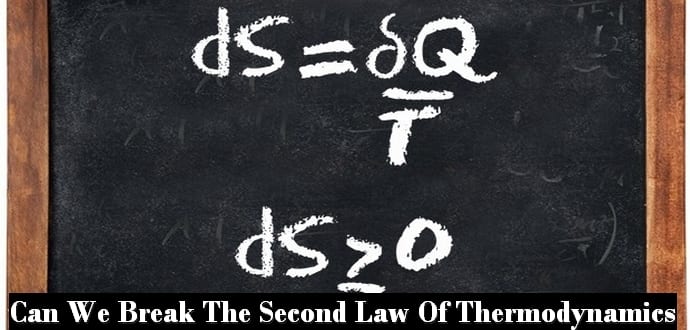Researchers find a loophole found in a fundamental law of physics that may lead to infinite power
Physicists from the U.S. Department of Energy’s (DOE) Argonne National Laboratory have formulated a mathematical theorem, which shows that the Second Law of Thermodynamics may have a loophole in it.
In modern physics, the laws of thermodynamics are some of the most important principles because they define how three fundamental physical quantities – temperature, energy, and entropy (disorder) – behave under different kinds of circumstances. According to the Second Law of Thermodynamics, entropy in the universe must always increase.
According to their research paper published in Scientific Reports, the researchers have developed a theoretical model where the Second Law is violated on a molecular level. Technically, Second Law is backed by the H-theorem. According to H-theorem, it explains how if you open a door between two rooms – one hot and one cold – both rooms’ temperature would eventually reach equilibrium making them both lukewarm; and the hot room will never end up hotter. The H-theorem depends upon a statistical interpretation of the way molecules move around.
While the H-theorem has been observed in a macroscopic level, scientists could not fully comprehend its fundamental physical origin. Where entropy increases, quantum information theory was able to offer a mathematical construct. It anticipated that there are certain conditions where entropy might actually decrease in the short term.
Valerii Vinokur, an Argonne Distinguished Fellow and corresponding author lead author study, said: “What we did was formulate how these beautiful abstract mathematical theories could be connected to our crude reality.”
The researchers used quantum information theory, which is grounded on abstract mathematical systems, and applied it to condensed matter physics, a well-understood field with many acknowledged laws and experiments.
“This allowed us to formulate the quantum H-theorem as it related to things that could be physically observed,” said Ivan Sadovskyy, a joint appointee with Argonne’s Materials Science Division and the Computation Institute and one of the authors on the paper. “It establishes a connection between well-documented quantum physics processes and the theoretical quantum channels that make up quantum information theory.”
In this new quantum H-theorem model, some molecules were seen to temporarily decrease in entropy, shattering the Second Rule of Thermodynamics.
The Argonne Lab team has now taken things a step further by preparing a mathematical model to show how a “negative temporary gain in entropy” may create a new quantum system. In other words, a decrease in entropy.
Vinokur said: “Although the violation is only on the local scale, the implications are far-reaching. This provides us a platform for the practical realisation of a quantum Maxwell’s demon, which could make possible a local quantum perpetual motion machine.” He further added that the finding finally, “could make possible a local quantum perpetual motion machine.”
While these quantum perpetual motion machines are still purely theoretical, but if it turns out to be successful, we could see our air conditioners and refrigerators someday being powered by quantum demons, saving us electricity and simultaneously cheat the current laws of physics.
Source: Sciencealert

